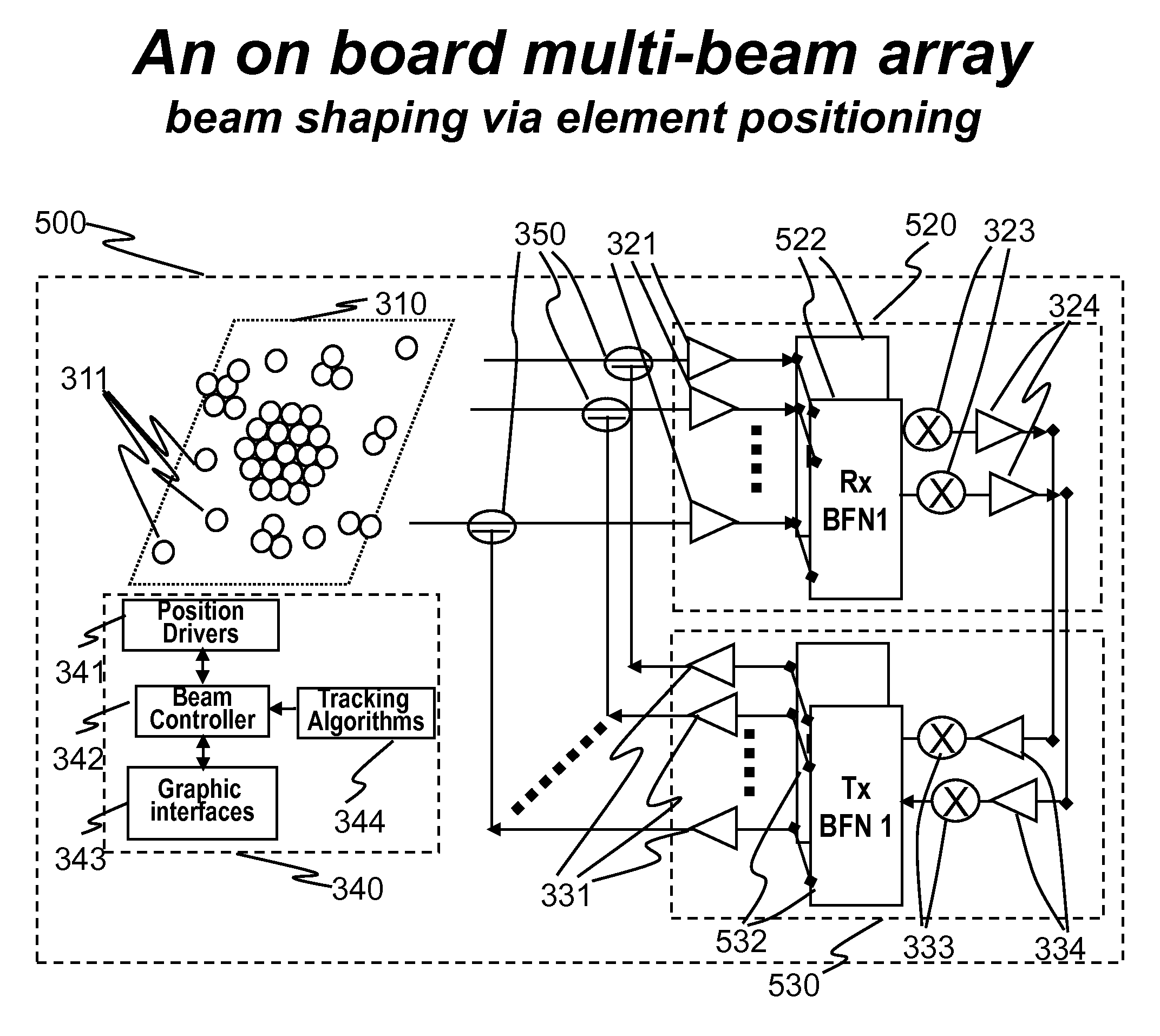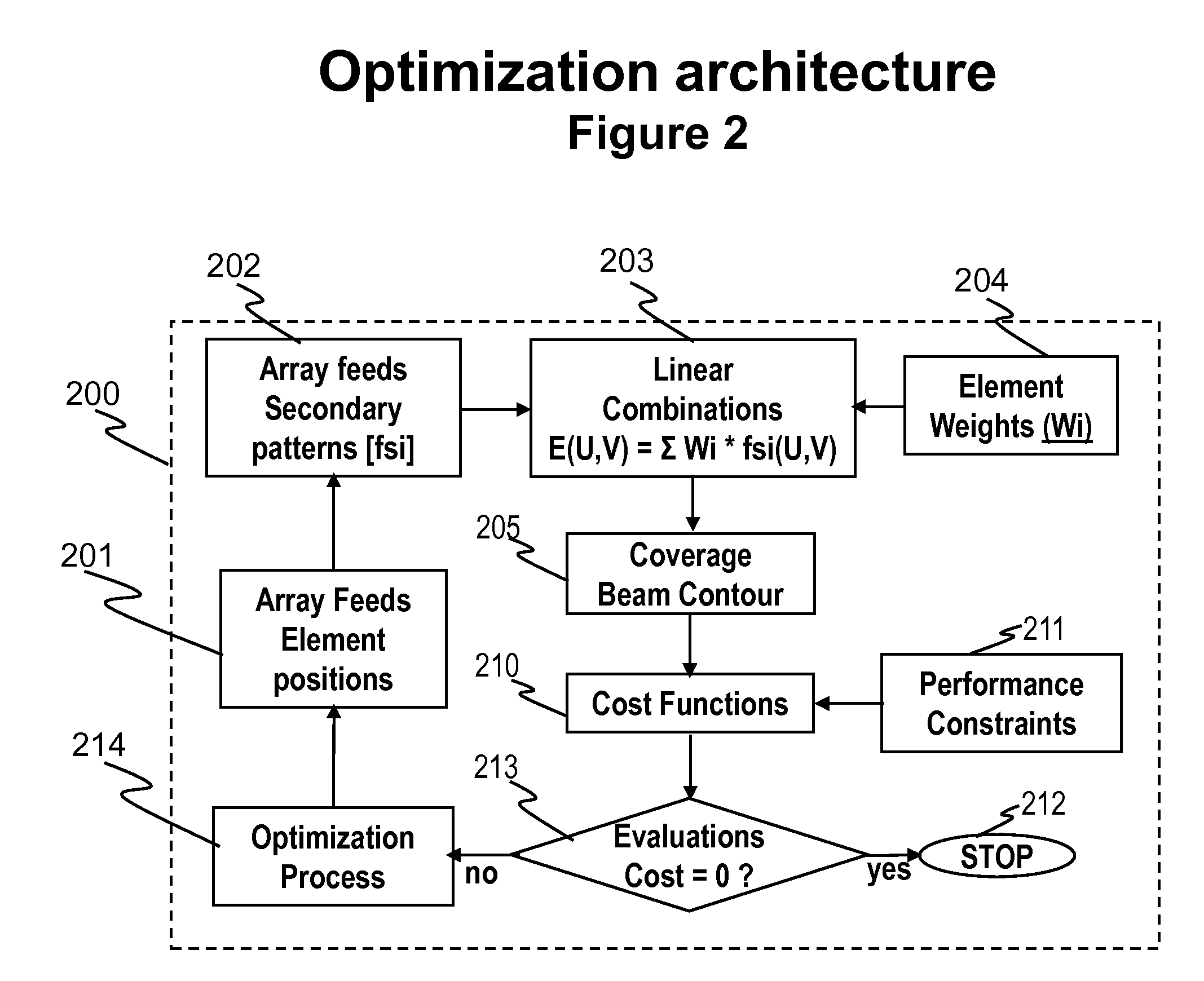Architectures and methods for novel antenna radiation optimization via feed repositioning
a technology of antenna radiation optimization and feed repositioning, applied in the direction of collapsible antenna means, antenna details, antennas, etc., can solve the problem of needing to increase the constraints of ground terminals for both transmit and receive functions, and achieve the effect of cost-effective and complex satellite antenna design
- Summary
- Abstract
- Description
- Claims
- Application Information
AI Technical Summary
Benefits of technology
Problems solved by technology
Method used
Image
Examples
Embodiment Construction
[0067]Mechanical feed position adjustment techniques can be applied in a cost effective manner to many antenna designs for reconfigurable coverage in various applications. In this disclosure, we list 6 different applications related to satellite communications. However, the same techniques can be utilized in many applications, including but with no limitation thereto, cell phone base stations, terrestrial point-to-point connectivity, point-to-multi-point connectivity, two way ground to air and air to ground communications links.
[0068]The present invention may perform any of the following functions for an antenna on satellites via feed repositioning:[0069]1. Shaping the antenna radiation pattern for either transmit or receive beams to prescribed contours covering a service area.[0070]2. Shaping the antenna radiation pattern for both transmit and receive beams to prescribed contours covering a service area.[0071]3. Configurability; to re-shape the radiation pattern to various contours...
PUM
 Login to View More
Login to View More Abstract
Description
Claims
Application Information
 Login to View More
Login to View More - R&D
- Intellectual Property
- Life Sciences
- Materials
- Tech Scout
- Unparalleled Data Quality
- Higher Quality Content
- 60% Fewer Hallucinations
Browse by: Latest US Patents, China's latest patents, Technical Efficacy Thesaurus, Application Domain, Technology Topic, Popular Technical Reports.
© 2025 PatSnap. All rights reserved.Legal|Privacy policy|Modern Slavery Act Transparency Statement|Sitemap|About US| Contact US: help@patsnap.com



